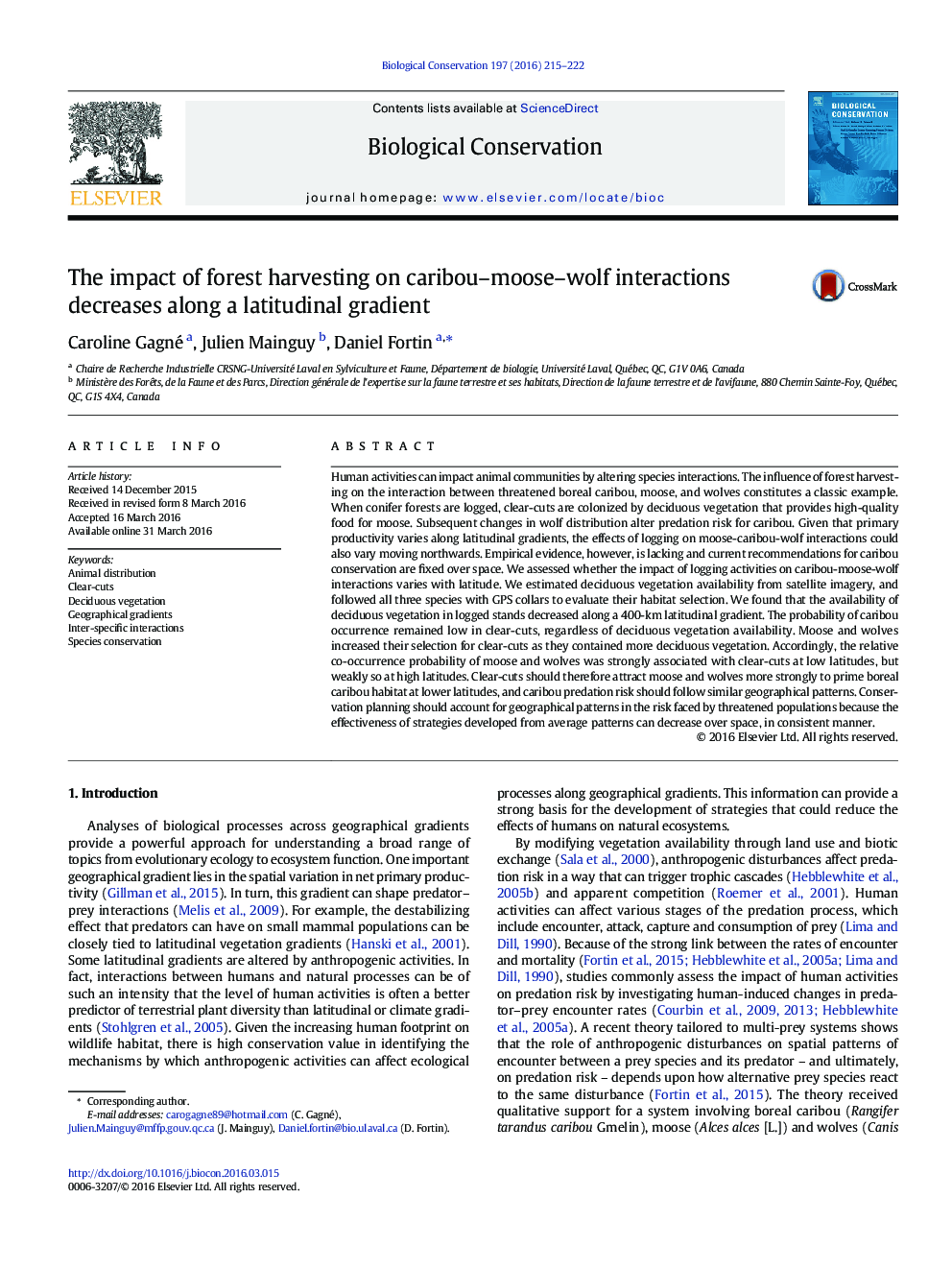| کد مقاله | کد نشریه | سال انتشار | مقاله انگلیسی | نسخه تمام متن |
|---|---|---|---|---|
| 6298432 | 1617904 | 2016 | 8 صفحه PDF | دانلود رایگان |
عنوان انگلیسی مقاله ISI
The impact of forest harvesting on caribou-moose-wolf interactions decreases along a latitudinal gradient
ترجمه فارسی عنوان
تأثیر برداشت جنگل بر روی تعاملات کاربو - گوزن گرگ در امتداد یک شیب عرضی کاهش می یابد
دانلود مقاله + سفارش ترجمه
دانلود مقاله ISI انگلیسی
رایگان برای ایرانیان
کلمات کلیدی
توزیع حیوانات، پاک کردن، کاهش، پوشش گیاهی، شیب های جغرافیایی، تعاملات متقابل، حفاظت از گونه ها،
موضوعات مرتبط
علوم زیستی و بیوفناوری
علوم کشاورزی و بیولوژیک
بوم شناسی، تکامل، رفتار و سامانه شناسی
چکیده انگلیسی
Human activities can impact animal communities by altering species interactions. The influence of forest harvesting on the interaction between threatened boreal caribou, moose, and wolves constitutes a classic example. When conifer forests are logged, clear-cuts are colonized by deciduous vegetation that provides high-quality food for moose. Subsequent changes in wolf distribution alter predation risk for caribou. Given that primary productivity varies along latitudinal gradients, the effects of logging on moose-caribou-wolf interactions could also vary moving northwards. Empirical evidence, however, is lacking and current recommendations for caribou conservation are fixed over space. We assessed whether the impact of logging activities on caribou-moose-wolf interactions varies with latitude. We estimated deciduous vegetation availability from satellite imagery, and followed all three species with GPS collars to evaluate their habitat selection. We found that the availability of deciduous vegetation in logged stands decreased along a 400-km latitudinal gradient. The probability of caribou occurrence remained low in clear-cuts, regardless of deciduous vegetation availability. Moose and wolves increased their selection for clear-cuts as they contained more deciduous vegetation. Accordingly, the relative co-occurrence probability of moose and wolves was strongly associated with clear-cuts at low latitudes, but weakly so at high latitudes. Clear-cuts should therefore attract moose and wolves more strongly to prime boreal caribou habitat at lower latitudes, and caribou predation risk should follow similar geographical patterns. Conservation planning should account for geographical patterns in the risk faced by threatened populations because the effectiveness of strategies developed from average patterns can decrease over space, in consistent manner.
ناشر
Database: Elsevier - ScienceDirect (ساینس دایرکت)
Journal: Biological Conservation - Volume 197, May 2016, Pages 215-222
Journal: Biological Conservation - Volume 197, May 2016, Pages 215-222
نویسندگان
Caroline Gagné, Julien Mainguy, Daniel Fortin,
